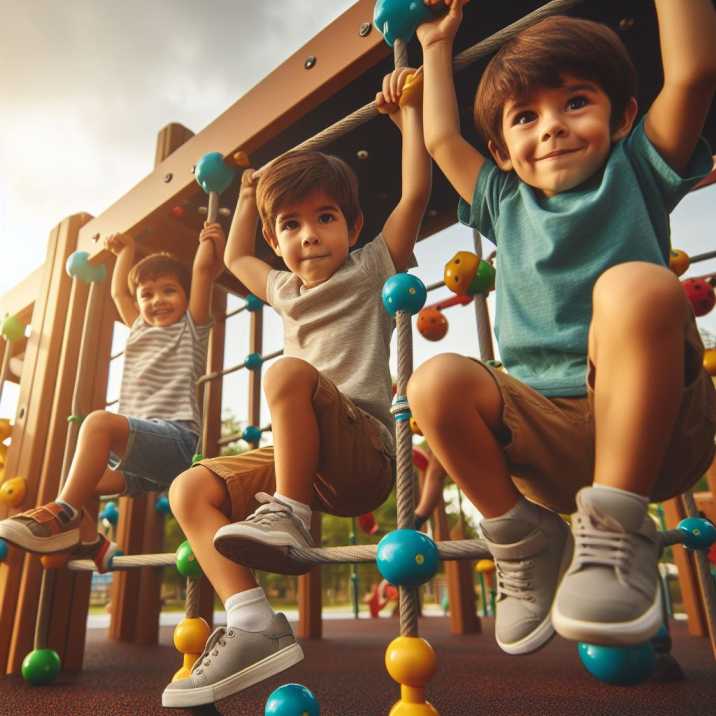Balance Training and Brain Development in kids
Table of Contents
Introduction
In the fast-paced world of today, where technology dominates and screen time is on the rise, it’s crucial to pay attention to the holistic development of our children. This article delves into the science behind balance training and brain development and how it directly influences brain development in kids.

Unlocking Potential with Balance
As parents and educators, we often focus on academic achievements, but the connection between physical activities and cognitive growth is a fascinating area of study.
The Importance of Balance for Cognitive Growth
Balancing Act: The Brain-Body Connection
The brain and body are intricately connected, and fostering a strong bond between the two is essential for optimal development. Balance training is a powerful tool to achieve this synchronization.
Building Neural Pathways
When a child engages in balance activities, they are not only refining their physical coordination but also forming and strengthening neural pathways in the brain. These pathways are the foundation for various cognitive functions.
Key Activities for Balance Training
- Walking on Uneven Surfaces: Encourage your child to walk on uneven surfaces like grass or sand. This challenges their balance and stimulates the brain.
- Climbing: Climbing structures at the playground or even indoor climbing walls help enhance both physical and mental agility.
- Yoga and Tai Chi for Kids: These practices focus on balance, concentration, and controlled movements, making them excellent choices for overall development.

The Link Between Balance Training and Brain Development
Neurotransmitters and Balance
Engaging in balance activities triggers the release of neurotransmitters in the brain. These chemicals play a vital role in transmitting signals between nerve cells, contributing to improved cognitive function.
Improved Attention Span
Studies have shown that children who regularly participate in balance training activities demonstrate an increased attention span. This can have a positive impact on their performance in academic and everyday tasks.
Enhancing Memory Function
Balancing exercises stimulate the hippocampus, a region of the brain associated with memory and learning. As a result, children who engage in such activities may experience improvements in memory function.
Integrating Balance Training into Everyday Life
Making it Fun
The key to successful balance training and brain development is to make it enjoyable for kids. Incorporate games, challenges, and playful activities to keep them motivated.
Family Bonding
Engaging in balance exercises as a family not only promotes physical well-being but also strengthens familial bonds. It’s an excellent way to spend quality time together while prioritizing health.

The Passive Magic of Balance
Gentle Guidance
In balance training, the passive voice can be a powerful ally. Instead of instructing children directly, provide a conducive environment and let them explore their capabilities independently.
Observing Progress
By adopting a passive approach, parents and educators can observe the natural progression of a child’s skills. This allows for timely adjustments and personalized support.
Common Misconceptions About Balance Training and Brain Development
Myth: Balance Training is Only for Athletes
While balance training is crucial for athletes, it is equally beneficial for all children. The skills developed through balance activities are applicable in various aspects of life.
Addressing Safety Concerns
Some parents worry about the safety of balance training activities. However, with proper supervision and age-appropriate exercises, the risks are minimal, and the benefits far outweigh any concerns.
Balancing Screen Time
Striking a Balance
In today’s digital age, finding a balance between screen time and physical activities is essential. Incorporate short, engaging balance exercises into breaks from screen-based activities.
Mindful Screen Usage
Encourage mindful screen usage by implementing the 20-20-20 rule: every 20 minutes, take a 20-second break and look at something 20 feet away. This simple practice can help reduce eye strain and maintain overall well-being.
Conclusion
In conclusion, the science behind balance training and brain development in kids is a captivating journey into the interconnected realms of the physical and cognitive. By integrating balance activities into a child’s routine, we can nurture not only their bodies but also their minds, setting the stage for a healthy and successful future. Embrace the joy of balance, and watch your child thrive in more ways than one.
FAQ Section: Frequently Asked Questions
FAQs:
- How often should my child engage in balance training?
- Aim for at least 30 minutes a day. This can be spread throughout various activities.
- Are balance training activities safe for all age groups?
- Yes, with proper supervision and age-appropriate exercises, balance training is safe for children of all ages.
- Can balance training be incorporated into school routines?
- Absolutely! Schools can include short balance breaks during the day to enhance students’ focus and cognitive abilities.
- Are there specific balance exercises for children with special needs?
- Yes, many modified balance activities cater to children with special needs, promoting inclusivity and development.
- How soon can I expect to see improvements in my child’s cognitive abilities?
- While individual timelines vary, consistent engagement in balance training activities may lead to noticeable improvements within a few weeks.
- Is screen time detrimental to balance development?
- Excessive screen time can impact physical activities, but with a balanced approach, children can enjoy both technology and active play.
- Can balance training help with behavioral issues?
- Studies suggest that regular physical activities, including balance training, can contribute to improved behavior and emotional well-being in children.
- Are there indoor balance activities for days with unfavorable weather?
- Yes, there are numerous indoor activities, such as balancing on one foot, indoor obstacle courses, and yoga, that can be done regardless of the weather.
- How can parents make balance training more exciting for kids?
- Incorporate games, challenges, and creative elements into balance activities to make them enjoyable for children.
- Can adults benefit from balance training as well?
- Absolutely! Balance training is beneficial for individuals of all ages and can contribute to overall well-being and coordination.
- Should balance training replace traditional sports and physical education?
- Balance training complements traditional sports and physical education, offering additional benefits for overall development.
- What are some signs that my child may need additional support in balance development?
- Persistent issues with coordination, difficulty maintaining balance, or reluctance to engage in physical activities may indicate a need for additional support. Consult a healthcare professional for guidance.


